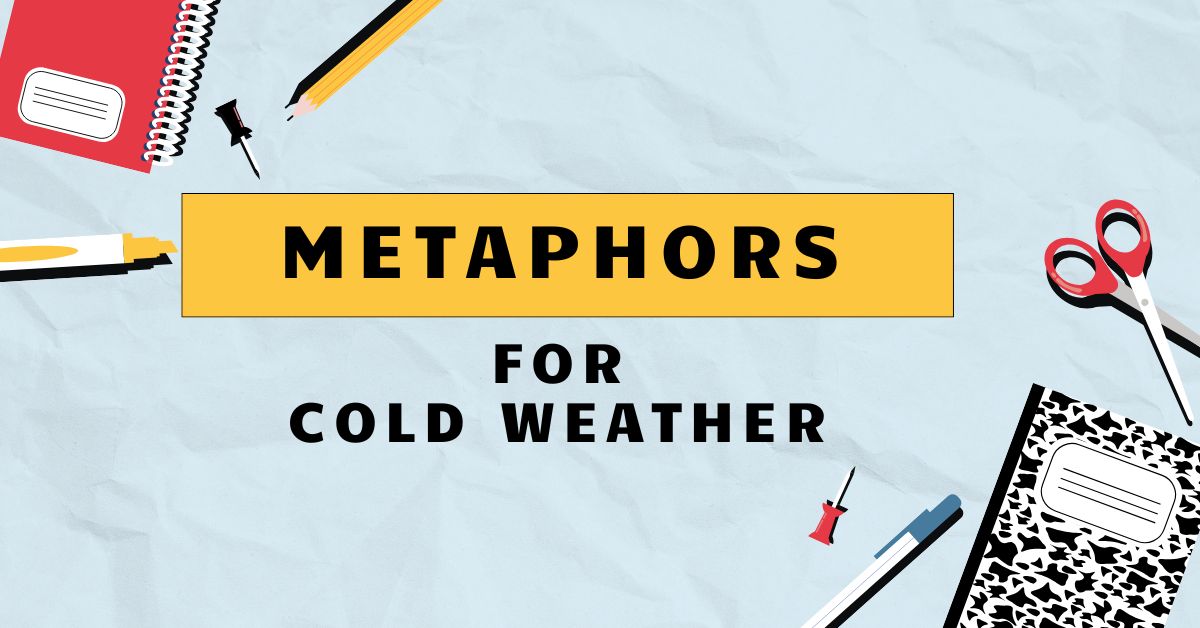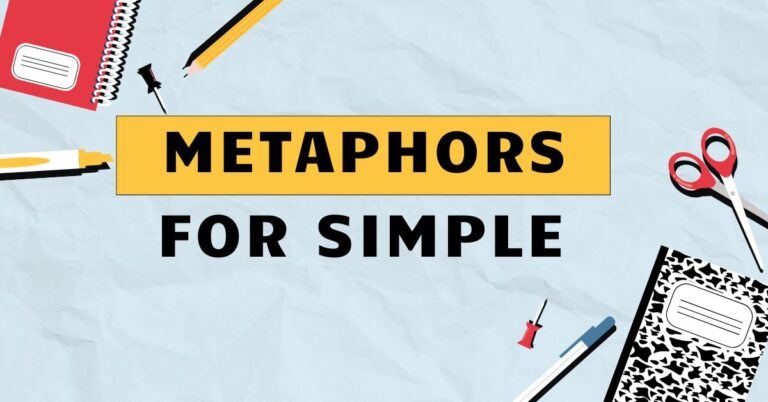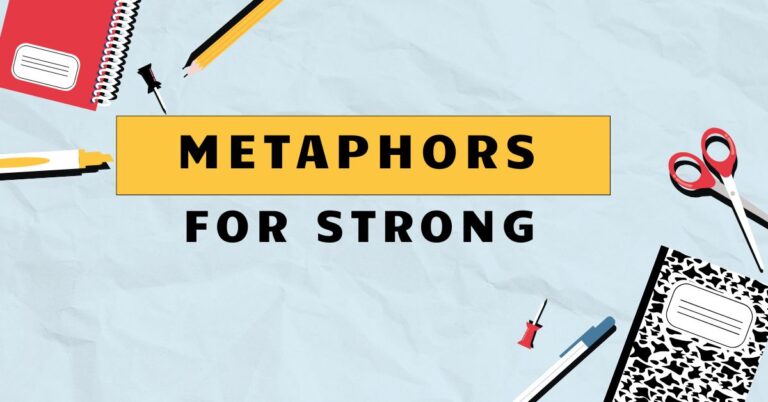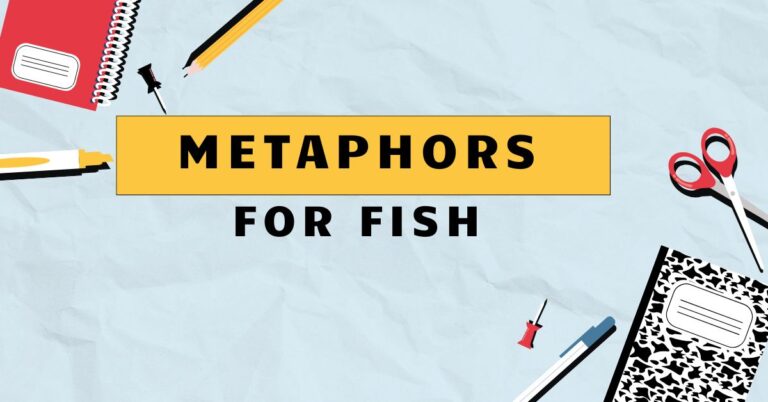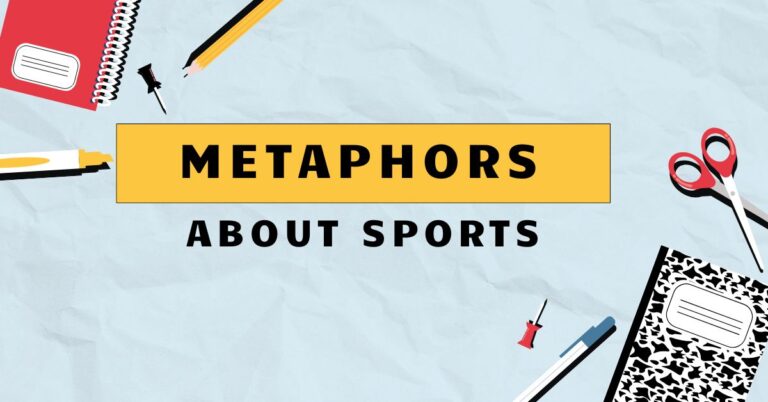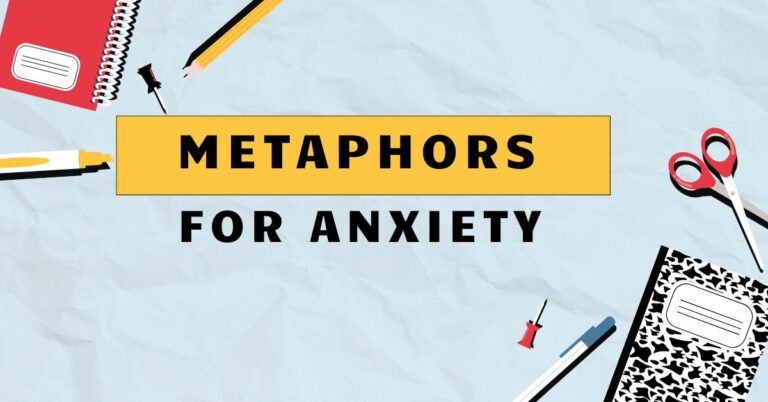42 Metaphors for Cold Weather: A Comprehensive Guide
Understanding metaphors is essential for mastering the nuances of the English language. Metaphors allow us to express complex ideas and emotions in vivid and relatable ways.
Specifically, metaphors for cold weather help us to convey the intensity and impact of cold conditions through creative comparisons. This guide is designed for English language learners of all levels, from beginners looking to expand their vocabulary to advanced speakers aiming to refine their expressive abilities.
This article will explore various metaphors used to describe cold weather, providing definitions, structural breakdowns, examples, and usage rules. By the end of this guide, you’ll be equipped to understand and use these metaphors effectively, enhancing your communication skills and appreciation for the richness of the English language.
Table of Contents
- Introduction
- Definition of Metaphor
- Classification of Metaphors
- Function of Metaphors
- Contexts for Using Metaphors
- Structural Breakdown
- Types and Categories of Cold Weather Metaphors
- Temperature Metaphors
- Feeling Metaphors
- Object Metaphors
- Animal Metaphors
- Descriptive Metaphors
- Examples of Cold Weather Metaphors
- Temperature-Related Metaphors
- Feeling-Related Metaphors
- Object-Related Metaphors
- Animal-Related Metaphors
- Descriptive Metaphors Examples
- Usage Rules
- Appropriateness and Context
- Clarity and Understanding
- Avoiding Clichés
- Common Mistakes
- Practice Exercises
- Advanced Topics
- Extended Metaphors
- Mixed Metaphors
- FAQ
- Conclusion
Definition of Metaphor
A metaphor is a figure of speech that directly compares two unrelated things, asserting that one thing *is* another to highlight a similarity or shared quality. Unlike similes, which use words like “like” or “as” to make comparisons, metaphors make a direct connection, creating a more vivid and imaginative image.
Classification of Metaphors
Metaphors can be classified based on their structure and function. Some common classifications include:
- Standard Metaphors: Explicit comparisons where the similarity is clear.
- Implied Metaphors: Indirect comparisons where the connection is suggested rather than stated.
- Dead Metaphors: Metaphors that have become so common that they are no longer recognized as figurative language.
Function of Metaphors
Metaphors serve several important functions in language:
- Enhancing Understanding: They help explain complex ideas by relating them to familiar concepts.
- Creating Imagery: They evoke vivid mental images, making language more engaging and memorable.
- Expressing Emotion: They convey feelings and attitudes in a powerful and concise way.
Contexts for Using Metaphors
Metaphors are used in various contexts, including:
- Literature: To add depth and meaning to writing.
- Everyday Speech: To make conversations more colorful and expressive.
- Business: To communicate complex strategies and ideas effectively.
Structural Breakdown
The structure of a metaphor typically involves two key elements: thetenorand thevehicle. The tenor is the subject being described, while the vehicle is the object or concept used to describe it.
The connection between the tenor and vehicle is the shared characteristic or similarity that the metaphor highlights.
For example, in the metaphor “The cold was a knife,” the tenor is “the cold,” and the vehicle is “a knife.” The shared characteristic is the sharp, piercing sensation. Understanding this structure helps in both interpreting and creating effective metaphors.
Types and Categories of Cold Weather Metaphors
Cold weather metaphors can be categorized based on the aspect of cold they emphasize. These categories help organize and understand the diverse ways we describe cold conditions.
Temperature Metaphors
These metaphors directly relate the cold to specific temperature references, often exaggerating or emphasizing the extreme nature of the cold. They help convey how intensely cold the weather is.
Feeling Metaphors
These metaphors focus on the emotions and physical sensations associated with cold weather. They describe how the cold makes people feel, such as discomfort, pain, or numbness.
Object Metaphors
These metaphors compare the cold to objects known for their coldness or sharpness, creating a vivid image of the cold’s intensity. They add a tangible quality to the description of cold weather.
Animal Metaphors
These metaphors use animals known for their resilience to cold or their association with winter to describe the cold weather. They often imply a sense of harshness or endurance.
Descriptive Metaphors
These metaphors use general descriptive terms to characterize the cold, focusing on its qualities and effects. They provide a broader sense of the cold’s impact on the environment and people.
Examples of Cold Weather Metaphors
The following tables provide extensive examples of cold weather metaphors, organized by category. Each example is designed to illustrate the specific type of metaphor and its usage.
Temperature-Related Metaphors
These examples use temperature references to emphasize the extreme cold.
The following table will show examples of temperature-related metaphors, showing the metaphor and a sentence example.
| Metaphor | Example Sentence |
|---|---|
| The air was an icebox. | Stepping outside felt like entering an icebox, chilling us to the bone. |
| It was a deep freeze. | The city was in a deep freeze, with temperatures plummeting overnight. |
| The weather was sub-zero hell. | This winter, the weather has been sub-zero hell, making daily life a struggle. |
| The cold was a polar blast. | A polar blast swept through the region, bringing record-breaking low temperatures. |
| Winter was a refrigerator. | That year, winter felt like living inside a refrigerator, with no escape from the cold. |
| The wind was a freezer burn. | The icy wind felt like a freezer burn on exposed skin. |
| The temperature was an arctic nightmare. | The locals described the temperature as an arctic nightmare, with no end in sight. |
| The air turned into liquid nitrogen. | The air outside had virtually turned into liquid nitrogen, it was so bitingly cold. |
| The climate was an ice age. | This winter felt like a return to an ice age, with unrelenting cold and snow. |
| The atmosphere was a block of ice. | The atmosphere was like a solid block of ice, making it hard to breathe. |
| The air was colder than a witch’s kiss. | The air was colder than a witch’s kiss, a chilling reminder of winter’s power. |
| The cold was a glacial tomb. | The valley felt like a glacial tomb, frozen and desolate. |
| It felt like winter’s icy grip. | The town was in winter’s icy grip, with snow blanketing everything. |
| The weather was a Siberian exile. | The month of January felt like a Siberian exile, bleak and unforgiving. |
| The cold was a frozen wasteland. | The landscape transformed into a frozen wasteland, devoid of life. |
| The night air was a frozen dagger. | The night air was a frozen dagger, piercing through layers of clothing. |
| It was an icy hellscape. | The city became an icy hellscape after the blizzard. |
| The wind chill was a cryogenic chamber. | The wind chill created conditions like a cryogenic chamber, almost unbearable. |
| The temperature was an absolute zero. | The temperature felt like absolute zero, an unimaginable cold. |
| The cold was a desolate tundra. | The region transformed into a desolate tundra, with endless snow and ice. |
| The air was freezing point. | The air was freezing point, and you could see your breath in the air. |
| It was a freezer. | The room felt like a freezer, chilling us to the bone. |
| The weather was like an igloo. | During the storm, the weather was like an igloo, trapping us inside. |
| It was a white hell. | The snowstorm turned the city into a white hell, making travel impossible. |
| The cold was an ice age. | The cold outside was like an ice age, making it hard to stay warm. |
Feeling-Related Metaphors
These examples describe the emotional and physical sensations caused by the cold.
The following table will show examples of feeling-related metaphors, showing the metaphor and a sentence example.
| Metaphor | Example Sentence |
|---|---|
| The cold was a thousand needles. | The wind felt like a thousand needles pricking my skin. |
| Winter was a cruel mistress. | Winter has been a cruel mistress this year, bringing relentless storms. |
| The air bit with icy teeth. | The air bit with icy teeth, leaving our faces numb. |
| The chill was a bone-deep ache. | The chill settled into a bone-deep ache that wouldn’t go away. |
| The cold was a slap in the face. | Stepping outside was like receiving a slap in the face from the cold. |
| The wind was an icy whip. | The wind lashed at us like an icy whip, making it hard to walk. |
| The cold was a thief of warmth. | The cold was a thief of warmth, stealing every bit of comfort. |
| The air was a frozen fist. | The air felt like a frozen fist squeezing the breath from our lungs. |
| The cold was a silent killer. | The cold can be a silent killer, especially for the vulnerable. |
| The weather was a heartless tyrant. | The weather acted like a heartless tyrant, ruling with icy force. |
| The cold was a painful bite. | The cold air when she stepped outside was a painful bite on her cheeks. |
| The cold was an enemy. | The cold felt like an enemy, always seeking to invade her warmth. |
| Winter was a tormentor. | Winter was a tormentor, bringing relentless frost and ice. |
| The cold was a deep-seated chill. | The cold was a deep-seated chill that went straight to the bone. |
| The cold was a frozen hell. | The cold was a frozen hell, making every task a difficult chore. |
| Winter was a relentless assault. | Winter was a relentless assault, with constant snow and biting winds. |
| The cold was an icy cage. | The cold was like an icy cage, trapping people indoors. |
| The cold was a polar bear hug. | The cold was a polar bear hug that you couldn’t escape from. |
| It was a cold embrace. | The chill in the air felt like a cold embrace as night fell. |
| The cold was a silent assassin. | The cold was a silent assassin, sneaking into homes and causing discomfort. |
| The cold was a miserable fiend. | The cold was a miserable fiend, making everyone long for summer. |
| The cold was a personal insult. | The cold felt like a personal insult, mocking her efforts to stay warm. |
| The cold was a frosty slap. | The cold was a frosty slap that woke her up instantly. |
| The cold was a harsh reality. | The cold was a harsh reality in the mountain village. |
| The cold was a bitter pill. | The cold was a bitter pill to swallow after a warm summer. |
| Winter was a dark cloud. | Winter was a dark cloud hanging over the town, dampening spirits. |
Object-Related Metaphors
These examples compare the cold to objects known for their coldness or sharpness.
The following table will show examples of object-related metaphors, showing the metaphor and a sentence example.
| Metaphor | Example Sentence |
|---|---|
| The wind was a shard of glass. | The wind felt like a shard of glass cutting through my clothes. |
| The air was liquid ice. | The air outside felt like liquid ice, coating everything it touched. |
| The cold was an iron grip. | The cold held the city in an iron grip, freezing everything solid. |
| The snow was a white blanket. | The snow lay like a white blanket over the fields. |
| The ice was a frozen mirror. | The ice on the lake was a frozen mirror, reflecting the gray sky. |
| The wind was a frozen razor. | The wind blew like a frozen razor, stinging any exposed skin. |
| The cold was a steel cage. | The cold felt like a steel cage, trapping us indoors. |
| The frost was diamond dust. | The frost glittered like diamond dust in the morning light. |
| The air was a block of ice. | The air felt like a solid block of ice, making it hard to breathe. |
| The cold was a frozen dagger. | The cold was a frozen dagger, piercing through layers of clothing. |
| The snow was a soft quilt. | The snow was a soft quilt, covering the landscape in serene silence. |
| The cold was a frozen tomb. | The cold turned the city into a frozen tomb, silent and still. |
| The winter air was a frigid veil. | The winter air was a frigid veil, obscuring the world in frost. |
| The cold was a sheet of ice. | The cold was a sheet of ice, making every surface treacherous. |
| The wind was an icy blade. | The wind was an icy blade, cutting through layers of clothing. |
| The cold was a frozen fist. | The cold was a frozen fist, squeezing the life out of everything. |
| The snow was a heavy shroud. | The snow was a heavy shroud, burying the world in white. |
| The air was a cold blanket. | The air was a cold blanket, wrapping around her and chilling her to the bone. |
| The frost was a silver coating. | The frost was a silver coating on the trees, making them look like sculptures. |
| The cold was a frozen sheet. | The cold was a frozen sheet, making the roads too dangerous to drive on. |
| The wind was a frozen claw. | The wind was a frozen claw, digging into my skin. |
| The air was an icy curtain. | The air was an icy curtain, separating the warm indoors from the frozen world outside. |
| The snow was a cotton layer. | The snow was a cotton layer, muffling all sounds. |
| The ice was a glass surface. | The ice was a glass surface, reflecting the pale winter sun. |
| The cold was a frozen hand. | The cold was a frozen hand, gripping the city and holding it hostage. |
| The wind was a frozen spear. | The wind was a frozen spear, piercing straight through her coat. |
Animal-Related Metaphors
These examples use animals known for their resilience to cold to describe the cold weather.
The following table will show examples of animal-related metaphors, showing the metaphor and a sentence example.
| Metaphor | Example Sentence |
|---|---|
| The cold was a polar bear’s breath. | The cold felt like a polar bear’s breath, icy and raw. |
| Winter was a hibernating bear. | Winter was like a hibernating bear, slow and heavy. |
| The wind was a wolf’s howl. | The wind sounded like a wolf’s howl, echoing through the empty streets. |
| The temperature was penguin weather. | The temperature was definitely penguin weather, cold enough to freeze anything. |
| The cold was a snake’s chill. | The cold was a snake’s chill, creeping into every corner. |
| Winter was an arctic fox. | Winter was as cunning as an arctic fox, always finding new ways to surprise us. |
| The wind was a raven’s cry. | The wind was like a raven’s cry, foreboding and eerie. |
| The cold was a snow owl’s gaze. | The cold was a snow owl’s gaze, piercing and watchful. |
| Winter was a frosty dragon. | Winter was a frosty dragon, breathing icy fire on the land. |
| The cold was an icy eagle. | The cold was an icy eagle, soaring through the mountains with a frigid grip. |
| The cold was a wolf’s bite. | The cold was a wolf’s bite, sharp and unforgiving. |
| The wind was a polar gust. | The wind was a polar gust, howling with arctic fury. |
| The temperature was like a penguin’s embrace. | The temperature was like a penguin’s embrace, cozy for them but freezing for us. |
| Winter was a bear’s nap. | Winter was a bear’s nap, long and deep, covering the land in snow. |
| The air was a serpent’s breath. | The air was a serpent’s breath, icy and venomous. |
| The cold was a snow leopard’s stealth. | The cold was a snow leopard’s stealth, silently creeping into your bones. |
| The wind was a raven’s wing. | The wind was a raven’s wing, dark and foreboding, sweeping through the night. |
| The cold was an owl’s stare. | The cold was an owl’s stare, piercing and unblinking. |
| Winter was a dragon’s hoard. | Winter was a dragon’s hoard, piling up snow and ice like treasure. |
| The cold was an eagle’s talon. | The cold was an eagle’s talon, grasping at the landscape with icy fingers. |
| The wind was a howling coyote. | The wind was a howling coyote, echoing through the canyons. |
| The temperature was a walrus’s comfort. | The temperature was a walrus’s comfort, freezing for humans but perfect for them. |
| Winter was a bear’s sleep. | Winter was a bear’s sleep, peaceful and undisturbed beneath the snow. |
| The air was a snake’s hiss. | The air was a snake’s hiss, a chilling sound that warned of danger. |
| The cold was a snow leopard’s grace. | The cold was a snow leopard’s grace, silent and beautiful, yet deadly. |
Descriptive Metaphors Examples
These examples use general descriptive terms to characterize the cold.
The following table will show examples of descriptive metaphors, showing the metaphor and a sentence example.
| Metaphor | Example Sentence |
|---|---|
| The cold was an icy blanket. | The cold settled like an icy blanket over the town. |
| Winter was a frozen dream. | Winter was a frozen dream, beautiful but untouchable. |
| The wind was a chilling whisper. | The wind was a chilling whisper, rustling through the trees. |
| The temperature was a stark reality. | The temperature was a stark reality, reminding us of winter’s power. |
| The cold was a frozen sigh. | The cold was a frozen sigh, lingering in the air. |
| Winter was a silent painting. | Winter was a silent painting, with snow-covered landscapes as its canvas. |
| The wind was a frozen song. | The wind was a frozen song, whistling through the mountains. |
| The cold was an icy sculpture. | The cold turned the trees into an icy sculpture, intricate and beautiful. |
| Winter was a frosty tale. | Winter was a frosty tale, full of magic and mystery. |
| The cold was an icy grip. | The cold was an icy grip, holding the world in its grasp. |
| The wind was a cold dance. | The wind was a cold dance, swaying branches and swirling snow. |
| The temperature was a frozen moment. | The temperature was a frozen moment, suspended in time. |
| The cold was a silver stillness. | The cold was a silver stillness, blanketing the landscape in quiet. |
| Winter was a crystal vision. | Winter was a crystal vision, sparkling with frost and ice. |
| The wind was a frosty murmur. | The wind was a frosty murmur, whispering secrets of the season. |
| The cold was an icy embrace. | The cold was an icy embrace, chilling but invigorating. |
| Winter was a frozen serenade. | Winter was a frozen serenade, its beauty both haunting and comforting. |
| The cold was an icy dream. | The cold was an icy dream, ethereal and otherworldly. |
| The wind was a chilling melody. | The wind was a chilling melody, playing through the frozen trees. |
| The cold was an icy specter. | The cold was an icy specter, haunting the landscape with its presence. |
| The cold was a frosty kiss. | The cold was a frosty kiss, a brief but sharp reminder of winter’s power. |
| The wind was a chilling breeze. | The wind was a chilling breeze, rustling through the bare branches. |
| The temperature was a frozen memory. | The temperature was a frozen memory, a reminder of past winters. |
| The cold was a silver shroud. | The cold was a silver shroud, covering everything in a layer of frost. |
| The cold was an icy artwork. | The cold was an icy artwork, painting the world with frost and snow. |
Usage Rules
Using metaphors effectively requires understanding the context and ensuring clarity. Here are some rules to guide you:
Appropriateness and Context
Consider the audience and situation when using metaphors. A highly creative or abstract metaphor might be suitable for literature but less effective in a business presentation.
Ensure the metaphor aligns with the tone and purpose of your communication.
For example, saying “The cold was a polar bear’s hug” might be fitting for a descriptive poem but less appropriate for a weather report.
Clarity and Understanding
The metaphor should enhance understanding, not confuse the audience. Choose metaphors that are relatable and easy to interpret.
Avoid using obscure or overly complex comparisons that might require explanation.
A metaphor like “The cold was a quantum entanglement of frozen particles” might be scientifically accurate but is unlikely to be understood by a general audience.
Avoiding Clichés
Cliches are overused metaphors that have lost their impact. While they might be easy to understand, they lack originality and can make your writing or speech sound uninspired.
Strive to create fresh and imaginative metaphors.
Instead of saying “The cold was biting,” which is a common cliche, try “The cold was a thousand needles pricking my skin,” which is more vivid and original.
Common Mistakes
Here are some common mistakes to avoid when using metaphors:
- Mixing Metaphors: Combining metaphors that create contradictory or nonsensical images.
- Using Inappropriate Metaphors: Choosing metaphors that don’t fit the context or audience.
- Overusing Metaphors: Using too many metaphors, which can make your writing or speech sound cluttered and confusing.
Correct: The cold was a frozen dagger.
Incorrect: The cold was a frozen dagger swimming in the ocean. (Mixing metaphors)
Correct: The wind was a chilling whisper.
Incorrect: The wind was a nuclear explosion of cold. (Inappropriate metaphor)
Practice Exercises
Test your understanding of cold weather metaphors with these exercises.
The following table will show practice exercises, with the questions and answers shown.
| Question | Answer |
|---|---|
| 1. Complete the metaphor: The cold was like a _____. | a) Knife |
| 2. What type of metaphor is “Winter was a cruel mistress”? | b) Feeling-related |
| 3. Rewrite the cliché “The cold was biting” with a more original metaphor. | c) The cold was a thousand needles pricking my skin. |
| 4. Identify the metaphor in the sentence: “The wind was a wolf’s howl.” | a) The wind was a wolf’s howl |
| 5. Complete the metaphor: “The snow was a _____ blanket.” | b) White |
| 6. What does the metaphor “The air was liquid ice” suggest about the cold? | c) The air was extremely cold and felt solid. |
| 7. Which of the following is an example of an object-related metaphor for cold weather? | a) The wind was a shard of glass. |
| 8. Create a metaphor to describe how the cold makes you feel. | b) The cold was a bone-deep ache. |
| 9. Complete the sentence with a fitting metaphor: “The city was held in winter’s _____.” | c) Icy grip |
| 10. What kind of metaphor is “Winter was a hibernating bear”? | a) Animal-related |
Exercise 2: Identify the type of metaphor
| Sentence | Type of Metaphor |
|---|---|
| 1. The air was a frozen fist. | Object-related |
| 2. The cold was a polar bear’s breath. | Animal-related |
| 3. The wind was a chilling whisper. | Descriptive |
| 4. Winter was a cruel mistress. | Feeling-related |
| 5. The air was an icebox. | Temperature-related |
Advanced Topics
For those looking to delve deeper into the art of using metaphors, here are some advanced concepts to explore.
Extended Metaphors
An extended metaphor is a metaphor that is developed over several lines or even throughout an entire piece of writing. It allows for a more complex and nuanced comparison, creating a richer and more engaging image.
For example, instead of simply saying “Winter was a cruel mistress,” you could extend the metaphor by describing how this mistress torments the land, freezes the rivers, and imprisons people in their homes, creating a detailed and evocative picture.
Mixed Metaphors
A mixed metaphor combines two or more incompatible metaphors in a single expression, often resulting in a nonsensical or humorous effect. While sometimes used intentionally for comedic purposes, mixed metaphors are generally considered a mistake to be avoided.
Example of a mixed metaphor: “Let’s nip it in the bud and then put the pedal to the metal.” This combines the idea of stopping something early with the idea of accelerating, creating a confusing image.
FAQ
Conclusion
Metaphors are powerful tools for expressing the intensity and impact of cold weather. By understanding the different types of cold weather metaphors, their structural components, and usage rules, you can enhance your communication skills and create vivid and memorable descriptions.
Whether you’re writing a poem, giving a presentation, or simply describing the weather to a friend, mastering the art of metaphor will enrich your language and deepen your appreciation for the nuances of English.

